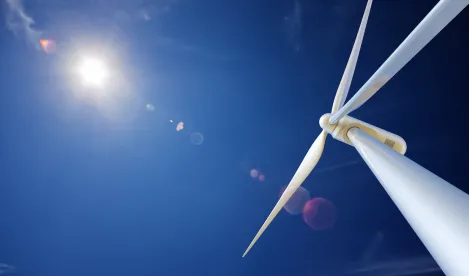MENA’s lightening speed renewables revolution must lead to generation-storage hybrid evolution
The regional pipeline of renewable deals is getting bolder and achieving unprecedented scales: in 2019 alone Abu Dhabi is planning to roll outs its 2GW of PV solar IPP, Dubai its DEWA V 900MW PV solar IPP, Qatar its phased 900MW PV solar IPP and Saudi Arabia its second round of renewables totaling in excess of 1.5GW (spread across 7 projects), just to name a few. Without factoring some of the incredible regional ambitions, notably in Saudi Arabia and its planned 200GW solar park, the effective integration of future and existing wind and solar power into a country’s grid infrastructure will require utility scale energy storage systems to maintain grid stability.
However, one of the main impediments to the implementation of sizeable energy storage solutions has been the relative immaturity of the market. With most energy generation projects being procured regionally and in Africa via various IPP programmes the natural inclination is to approach energy storage from the same limited recourse, project financed perspective. But, as with any project finance asset, the key bankability cornerstones are the identification of a revenue stream sufficient to cover the debt service repayments and the minimization and appropriate allocation of the risk that such revenue stream will be interrupted – this includes providing risk-averse lending institution the necessary comfort that the relevant energy storage solution is based on proven technology and will withstand the punches of use, climatic conditions and time.
Of course, with the latest Jordanian battery storage project and South Africa’s Eskom touting the idea of a battery storage PPP, the MEA region is showing green shoots of energy storage projects within the traditional limited recourse frameworks, as it should. The question remains, however, whether the approach of decoupling the (what should be viewed as) mutually interdependent assets (ie. energy generation and energy storage) is the correct approach. Differently put, serious consideration should be given to whether the bold pipeline of renewable deals should be procured on the basis of combined generation-storage basis, as a single PPP – what we coined the integrated generation-storage project (IGSP). We see innumerable benefits flowing out of such approach.
Vertical integration of assets
Given the increasing scale of upcoming renewables projects, it is unlikely that energy storage solutions will overtake individual energy generation projects so as to play multi-project energy aggregator role. If anything, any energy storage solution is bound to be significantly smaller than most upcoming MEA renewables IPPs, meaning that whatever energy storage project is implemented it will play a balancing role for a specific solar park or wind farm, and not a cumulative total of assets. It therefore makes sense that such renewables IPPs are vertically engineered, allowing developers to implement the best energy generation and coexisting energy storage solution under a single IGSP.
Reduction of interfacing and de-risking of assets
From a procurer’s perspective, it makes little sense to take all power produced by a renewables plant, irrespective of whether it is needed, under a single energy tariff, while concurrently paying an energy storage company for the availability of its energy storage asset to store energy excess and regulate grid stability. In fact such an approach is value destructive – it compels the procurer to pay for (depending on what time of the day it is) power it can’t use and energy storage it doesn’t need, all the while acting as the interface between two different projects, carrying all the risk vis-a-vis power generation if its storage provider is offline and vice versa. IGSP eliminates procurer interface risk and de-risks generation-storage assets. It also drives the renewables market away from the push to the pull model, allowing procurer’s to potentially dispatch plants as and when required (akin to the conventional power plant model), if only for a limited period of time. Ironically, such an approach is mutually beneficial to the potential developers in that upsizes the traditional IPP renewables project scope and creates opportunity for competitive bidding based on value, underpinned by solutions-driven engineering and not just price.
Convergence of contractual models and increased bankability
Clearly such an approach would also require substantial restructuring of the traditional renewables contractual package, with the resultant power and storage purchase agree wearing the hybrid characteristics of conventional power PPAs and energy storage leases. While this seems unthinkable in the present market context, it makes sense not only in light of the technological convergence but moreover with respect to improving the general bankability of energy storage projects – ie. the coupling of energy storage with energy generation might (barring complete outages) technically spread the risks that energy storage degradation and inefficiency spells for storage-only projects.
While arguably still in the category of “watch this space”, IGSPs are the natural evolution in the renewables revolution.



 />i
/>i

